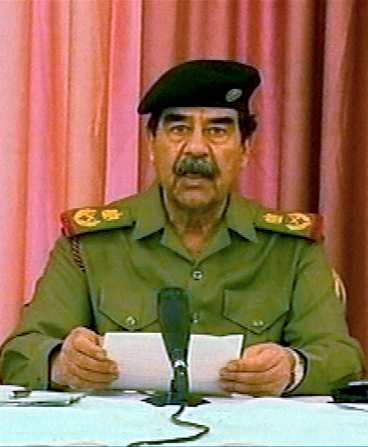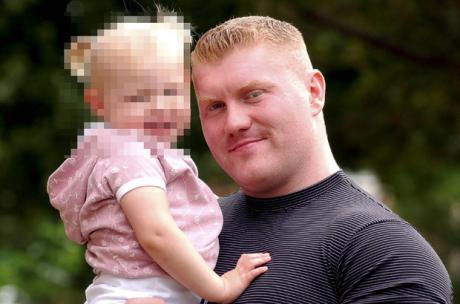No. 3 Saddam Hussein
Saddam, which means “he who confronts,” was born in a village called al-Auja, outside of Tikrit in northern Iraq. Either just before or just after his birth, his father disappeared from his life. Some accounts say that his father was killed; others say he abandoned his family. He assumed to power while staying in Baath party, imprisoned once on the cause of attempt murder of the prime minister of Iraq 1957. Saddam Hussein ruled Iraq with a brutal hand. He used fear and terror to stay in power.
From 1980 to 1988, Saddam led Iraq in a war against Iran which ended in a stalemate. Also during the 1980s, Saddam used chemical weapons against Kurds within Iraq, including gassing the Kurdish town of Halabja which killed 5,000 in March 1988. In 1990, Saddam ordered Iraqi troops to take the country of Kuwait. In response, the United States defended Kuwait in the Persian Gulf War. On March 19, 2003, the United States attacked Iraq. During the fighting, Saddam fled Baghdad. On December 13, 2003, U.S. forces found Saddam Hussein hiding in a hole in al-Dwar, near Tikrit. After a trial, Saddam Hussein was sentenced to death for his crimes. On December 30, 2006, Saddam Hussein was executed by hanging.
No. 2 Raoul Moat
The 2010 Northumbria Police manhunt was a major police action in North East England in which armed police officers under the authority of the Northumbria Police force were deployed to arrest Raoul Moat, a 37-year-old man from Newcastle upon Tyne who was on the run after shooting three people in two days. His victims were ex-girlfriend Samantha Stobbart, her new partner Chris Brown, and police officer David Rathband. Stobbart was hospitalised and Brown was killed, while Rathband remained in hospital for nearly three weeks and was enduringly blinded.
No. 1 Muammar Gaddafi
Colonel Muammar Gaddafi is the longest serving leader in both Africa and the Arab world, having ruled Libya since he overthrew King Idris I in a bloodless coup at the age of 27.
Famous for his glitzy dress sense and gun toting female body guards, the Libyan person in charge is also measured as an experienced political worker who moved swiftly to bring his country out of ambassadorial loneliness.
It was in the year 2003, after some two decades of pariah status – that Tripoli took accountability for the bombing of a Pan Am plane over the Scottish town of Lockerbie, paving the way for the UN to elevate permits. Months later, Col Gadaffi’s regime discarded efforts to expand weapons of mass destruction, triggering a fuller rapprochement with the West.
That saw him total a changeover from international exile to accepted, if unpredictable, leader.”He’s unique in his dialogue, in his behavior, in his practice and in his strategy,” says Libya analyst Saad Djebbar. “But he’s a shrewd politician, make no mistake about that. He’s a political survivor of the first order.”
Two months after rebel forces toppled his regime, Col. Muammar el-Qaddafi, the former dictator of Libya was allegedly killed early on Thursday, October 20, 2011 in the midst of a nearly two week-long encounter between the interim government’s army and loyalist fighters in Sirt — the ex-leader’s hometown, which was one of the last sympathetic enclaves in the country and the last remaining frontline in the country’s civil war. Everyone out there in Libya celebrated the news of Qaddafi’s death with joyful enthusiasm, with reports of celebrations among citizens around the country and especially in the capital of Tripoli.





